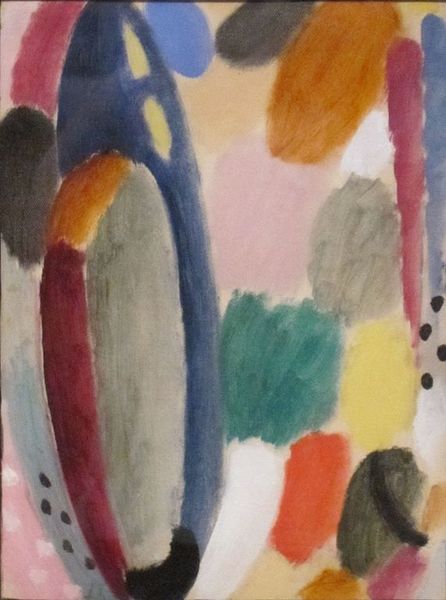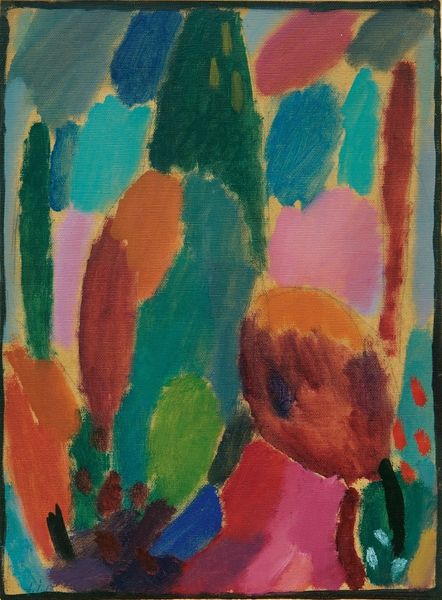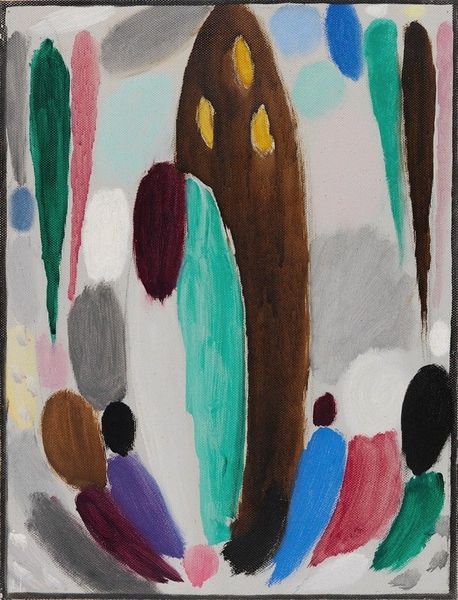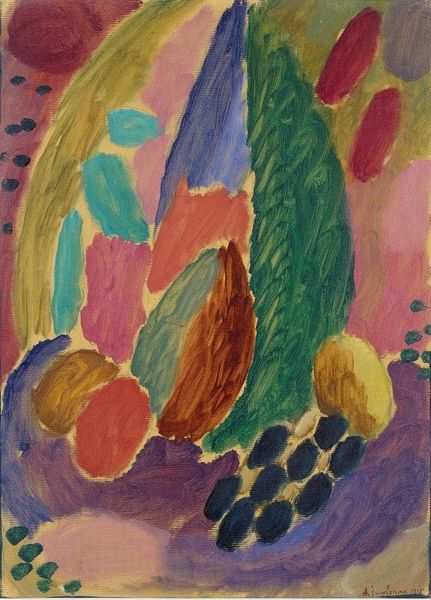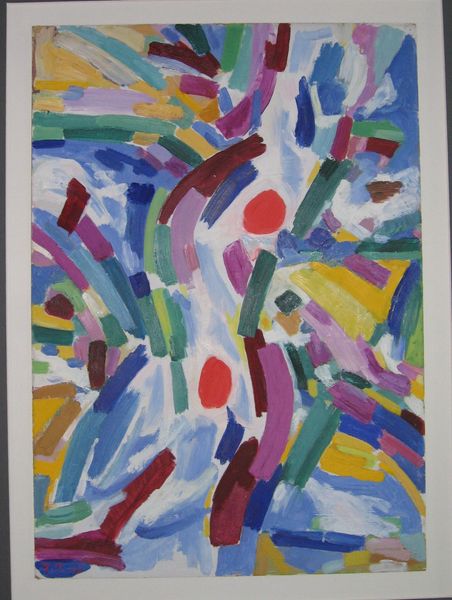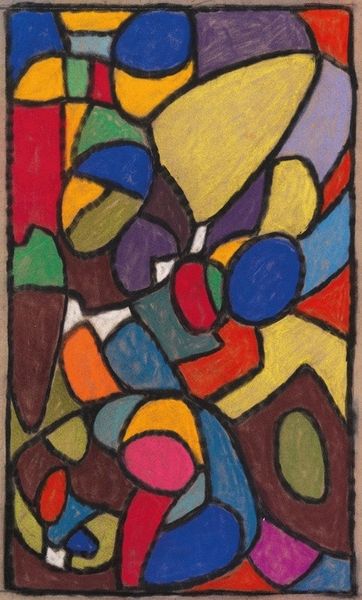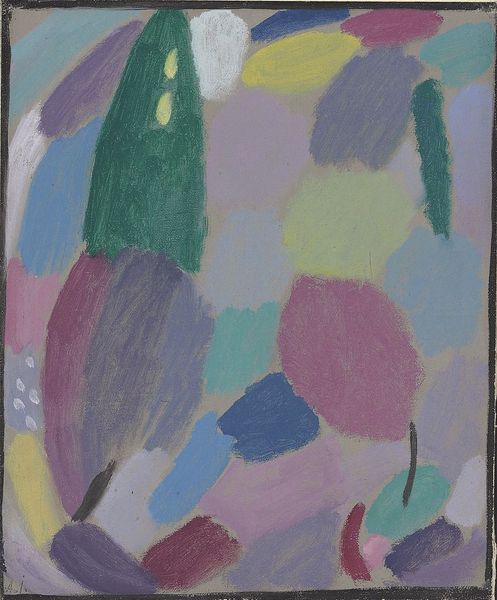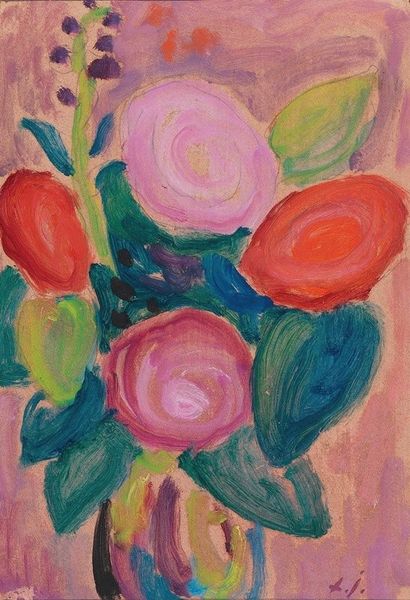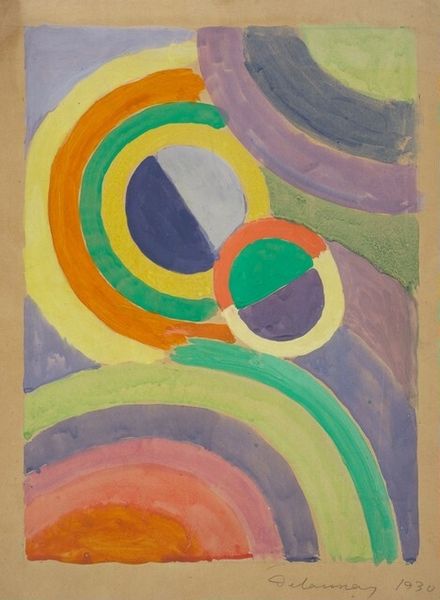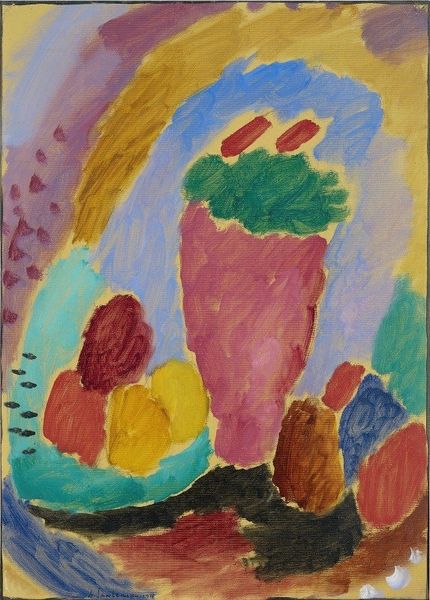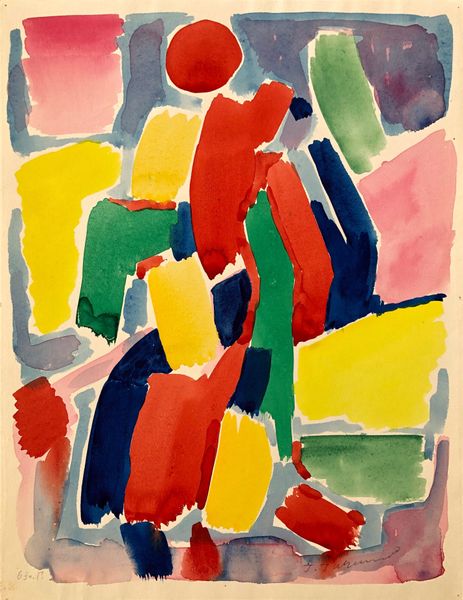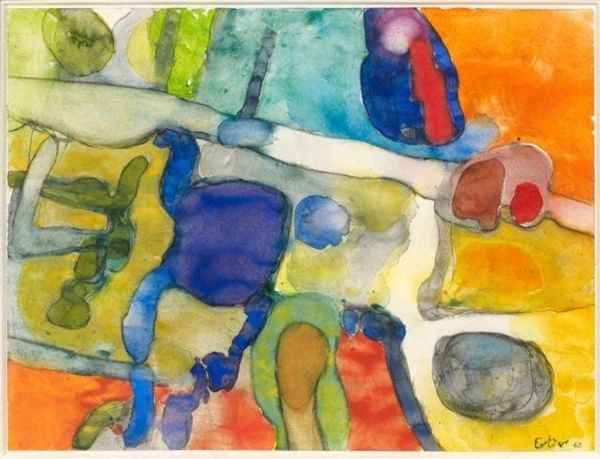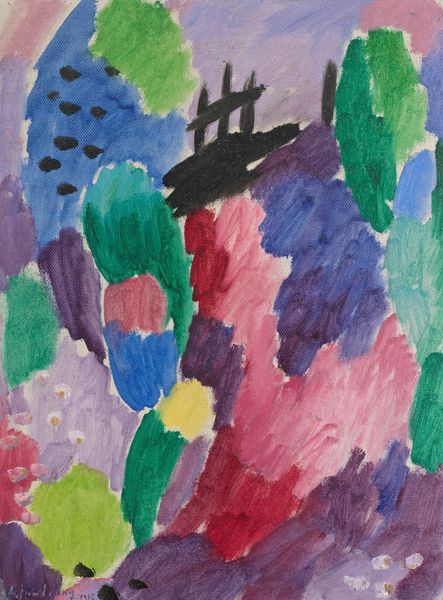
Copyright: Public Domain: Artvee
Editor: Here we have Alexej von Jawlensky’s *Variation; Duft und Frische* from 1918, made with oil paint. It feels almost like a dreamscape, but so fragmented. What do you see in this piece? Curator: I see a potent response to the anxieties of its time. Painted during the final year of World War I, the abstraction becomes a language for expressing the unspeakable. Jawlensky, through these seemingly simple forms and vibrant colours, grapples with themes of loss, identity, and the search for spiritual meaning amid chaos. Look at how the colors interact. Editor: Yes, there's this push and pull of bright, almost joyful colors alongside darker, more muted tones. Is he commenting on something specific? Curator: I think he’s reflecting the duality of the human experience, particularly during wartime. "Duft und Frische," translated as "Scent and Freshness," becomes almost ironic. He's hinting at a longing for beauty and peace amidst the harsh realities of war. What about the geometric abstraction, what feelings does that elicit? Editor: It’s unsettling. It gives an unstable feel. Like these familiar shapes aren’t stable at all. I wonder if that's supposed to echo the shifting political landscape at the time? Curator: Precisely. Art doesn't exist in a vacuum. Jawlensky's work, in its fractured beauty, speaks to the collective trauma and the individual's struggle to find meaning in a world torn apart. Does understanding the context shift how you perceive the "dreamscape" you mentioned? Editor: It does, immensely. It's no longer just an arrangement of shapes and colours; it's a deeply felt expression of a world in turmoil, reaching for hope. I'm finding the title so much more poignant now. Curator: It becomes a whisper of hope, doesn't it? A reminder that even in the darkest times, the desire for beauty and freshness persists.
Comments
No comments
Be the first to comment and join the conversation on the ultimate creative platform.
